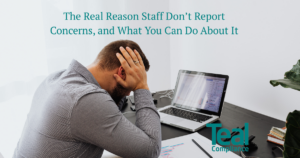Simon Harbord, Senior Associate at Teal Compliance, is a specialist in AML, Sanctions, Bribery and Regulatory Matters
Let’s be honest, most law firm partners don’t lose sleep over Companies House filings. But that might be about to change.
From April 2027, every UK company, including sole practitioners and small firms, will be required to file their full profit and loss accounts. There are no shortcuts, no abridged versions, and no more hiding behind “micro-entity” status. It’s all going public.
At Teal, we don’t just watch regulatory changes, we unpack them for busy compliance officers, COLPs, MLROs and managing partners. This one’s not just about filing accounts. It’s about transparency, economic crime, and how even the smallest law firm is being drawn into the fight against fraud.
Heading into 2027 - What’s Changing?
- From 1 April 2027, under the Economic Crime and Corporate Transparency Act, all UK companies, including small and micro‑entities. Small companies must file a copy of their balance sheet, directors’ report, auditor’s report (unless exempt) and profit and loss account. Micro’s a copy of their balance sheet and profit & loss (P&L) account via commercial software (no more web or paper options) including dormant accounts.
- Abridged or filleted accounts disappear.
- This applies to directors who file accounts themselves, and companies who use third party agents or accountants to file their annual accounts.
Who’s in scope?
- Small companies (2 of: turnover ≤ £15 m; assets ≤ £7.5 m; ≤ 50 employees) must now file full accounts.
- Micro‑entities (2 of: turnover ≤ £1 m; assets ≤ £500 k; ≤ 10 employees) likewise.
Why Now? The Forces Driving This Change
These four pillars are what is driving change:
- Combatting economic crime
These reforms close loopholes exploited by shell companies and fraudsters, improving the transparency and integrity of the Companies House register . - Stronger AML posture
P&L figures help regulators detect unusual profitability or suspicious transactions. Full disclosure aligns with AML expectations and supports suspicious activity monitoring. - Modernising the infrastructure
Mandating software-based filing ensures standardised submissions, fewer errors, and quicker detection of anomalies—moving Companies House from static to active oversight . - Public accountability
Energy firms and large clients in supply chains will now review small firms’ margins. Transparency is good for public trust, but firms should prepare for clients digging deeper.
What Law Firms & Sole Traders Need to Do (and Why)
Action | Why It Matters |
Start using compliant accounting software | All filings must go through commercial software after April 2027, no paper or simple spreadsheets. |
Review current account‑filing practices | Are you filing abridged accounts now? You’ll need a full P&L and balance sheet next time. |
Refine internal controls | With detailed P&L public, AML teams should ensure clear segregation of trust vs client funds, and that expense categories are robust and defensible. |
Enter risk management mode | Detailed financials increase the importance of proactive internal audits, especially on billing, disputes, and irregular creditor/debtor relationships. |
Use compliance to drive competitive edge | Transparency can be reframed positively, “we’re fully open, protected from fraud, and structured for long-term reliability.” |
Timeline: What’s Ahead
- Mid‑2025: Companies House is emailing registered firms about the upcoming software requirement.
- June 2025: Final rules confirmed; firms now know they can’t file abridged accounts from April 2027.
- Late 2026: Begin software implementation and trial filings.
- April 1, 2027: Key date – software‑only filing starts, full P&L required.
Impact on AML, Fraud & Risk Management
- More data = stronger detection
With P&L details, firms and regulators can better spot anomalous revenue spikes or expense irregularities, a boon for AML and fraud prevention. - Heightened due‑diligence pressure
Clients may scrutinise your margins before engaging services. Be ready to justify pricing and cost structures. - Enhanced compliance maturity
Moving from abridged to full accounts requires stronger controls. It’s a perfect moment to overhaul risk management frameworks and internal audits. - Opportunity to shine
As transparency becomes baseline, firms visible for robust compliance will stand out. Highlighting your readiness can attract compliance-conscious clients.
Next Steps for Teal Compliance Audience
- Audit your accounting process: map out current filing methods and software.
- Source or upgrade software: choose solutions approved by Companies House.
- Train staff: accountants, finance teams and fee-earners should understand changes.
- Revise compliance frameworks: update AML and fraud risk procedures to reflect new data visibility.
- Communicate proactively: let clients know you’re ahead of the curve, transparency is trust.
- Get your registration completed if you haven’t already.
In a Nutshell
🗓️ Deadline: 1st April 2027
💡 Change: Full P&L filing mandatory via software
🔒 Why: Tackle fraud, improve AML, and modernise the register
⚖️ For law firms: Risk & compliance tools must scale … software, controls, training, client management
🚀 Opportunity: Position transparency as a competitive asset; leverage compliance credibility.
This change isn’t just accountancy red tape … it’s a shift that intersects AML, fraud prevention, and overall firm resilience.
For law firms guided by my colleagues and I at Teal Compliance, it’s a clarion call to review, refresh and reframe. We are here to help you lead your teams on a transparency wave, because compliance isn’t a cost, it’s credibility!
If you’re not already thinking about how this impacts your risk profile, AML obligations, and internal systems, I’d suggest now’s the time!
Thanks for reading, I hope you have found this short guide helpful.
Simon




